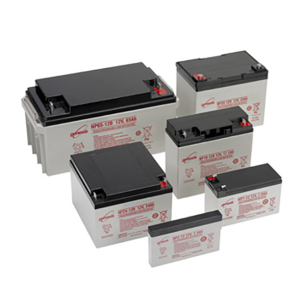Industrial and Commercial Batteries: Powering Your Critical Systems
Industrial and Commercial Batteries:
When it comes to powering your critical systems, UPS batteries play the main role in providing standby DC power. In power protection plans, sealed lead acid (SLA) batteries are commonly used in uninterruptible power supplies (UPS) and DC standby power systems. They are also the essential components in generator starter motor circuits. You will also fin that these batteries are employed in renewable power applications for energy storage, preserving energy derived from solar and wind power systems for later use.

Battery Construction:
Understanding the Basics A battery, often referred to as a battery block, consists of a case typically made from flame-retardant polypropylene PVC (UL94V-0 compliant). It features individual positive and negative terminals. The electrolyte, usually Sulphuric Acid in liquid or gel form, fills the space between the positive and negative plates. This creates a closed circuit of individual cells, establishing an electrical potential for subsequent discharge.
Battery Sizes:
Ampere-Hours and Cell Configurations Battery sizes are measured in ampere-hours (Ah) and are defined by the number of cells per block: 2Vdc, 6Vdc, or 12Vdc, for instance, represent 2, 6, and 12 cells respectively. The Ah rating signifies the amount of current the battery block can deliver per hour. A "battery set" refers to multiple batteries arranged in series, forming a connected string or several strings. The total Vdc of the battery set must match the input Vdc requirement of the device to be powered, such as a UPS inverter, solar inverter, or DC power standby system. For example, a 48Vdc input necessitates a 48Vdc battery set comprising 4 sets of 12Vdc battery strings or 8 strings of 6Vdc batteries. Sizing and Design Considerations In standby power applications, the battery set is sized to deliver a specific runtime (minutes or hours) at a defined Real Power load (Watts, kW, or MW). Battery manufacturers determine the size of battery sets based on these specifications, as well as other factors like operational ambient temperature and desired end-of-life state. For instance, some requirements mandate an 80% capacity at the end of the battery's working life.
Battery Design Life: Factors and Replacement Cycles Batteries are consumable items that age over time due to use and chemical interactions. The typical design life for batteries in UPS or DC standby power systems is around 5 years at an operational temperature of 20-25˚C or 250 charge/discharge cycles. This means that UPS batteries typically require replacement between years 3-4, while batteries with a ten-year design life may need replacement around years 7-8. The ambient environment significantly affects operational lifespan and overall performance. Battery life diminishes as temperature rises, with performance (runtime) temporarily increasing, but at the expense of longevity (which can halve above 30˚C). By understanding the fundamentals of industrial and commercial batteries, their sizes, design considerations, and lifespan factors, you can make informed decisions to ensure reliable power backup for your critical systems.







